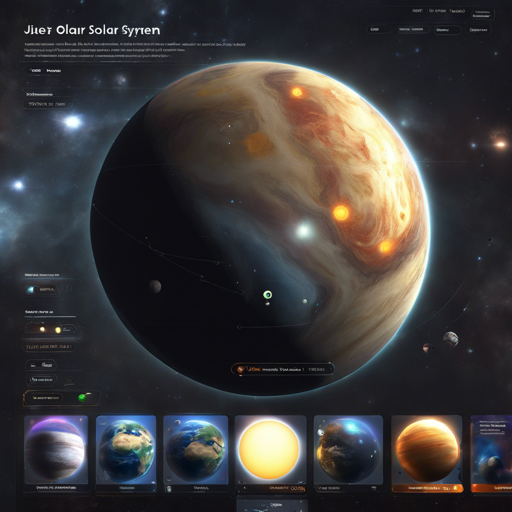Welcome to an intricate journey through our solar system, powered by the amazing 3D graphics framework, Three.js, and the rendering prowess of WebGL. In this article, we will guide you on how to bring this stunning simulation to life on your own system, exploring the celestial bodies modeled to scale based on real astronomical data.
What You Will Find in This Project
- Accurate representations of the sun and all eight planets.
- Inclusion of moons for each planet, the asteroid belt, and thousands of stars surrounding them.
- A visual representation that is both educational and captivating.
How to Get Started
Let’s delve into how you can set up the solar system simulation on your local machine.
Steps to Set Up the Solar System Simulation
- Download the source code from the Demo.
- Open the downloaded files in a code editor.
- Make sure you have a local server set up. You can use tools such as XAMPP or npm’s http-server.
- Run your local server and navigate to the project directory.
- Open your web browser and enter the URL provided by your local server (e.g., localhost:8000) to view the solar system.
Understanding the Code with an Analogy
Imagine you are a skilled architect tasked with designing a miniature solar system model. Each component of the model—like the sun, planets, and asteroids—is measured meticulously to ensure a perfect scale that replicates space’s vastness. Similarly, the code you will work with utilizes Three.js and WebGL to create a 3D scene where celestial objects are proportionate in size and distance based on real astronomical data. The sun shines at the center, planets orbit around it just like dancers in a choreographed ballet, where their movements are smooth and elegantly managed by the underlying code base. The moons, much like small siblings, orbit their respective planets, creating a beautiful dance of celestial bodies.
Troubleshooting Common Issues
If you encounter any issues while setting up or viewing the simulation, consider these troubleshooting tips:
- Problem: The simulation does not load or appears blank.
- Solution: Ensure that your local server is running and that you are accessing the correct project directory.
- Problem: Objects appear distorted or incorrectly rendered.
- Solution: Double-check if all required libraries are correctly linked in your HTML file. Also, confirm your browser supports WebGL.
- General Tip: Occasionally clearing your browser cache or trying a different browser might resolve preview issues.
For more insights, updates, or to collaborate on AI development projects, stay connected with fxis.ai.
Conclusion
With just a few steps, you can immerse yourself in an accurate and visually stunning model of our solar system. The use of Three.js and WebGL opens up a vast ocean of possibilities for future projects, from educational tools to interactive games that explore the wonders of space.
At fxis.ai, we believe that such advancements are crucial for the future of AI, as they enable more comprehensive and effective solutions. Our team is continually exploring new methodologies to push the envelope in artificial intelligence, ensuring that our clients benefit from the latest technological innovations.

